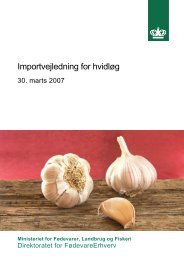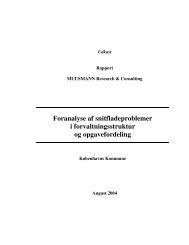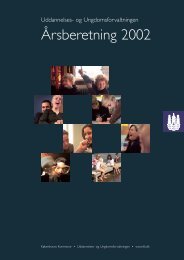Hele publikationen i PDF
Hele publikationen i PDF
Hele publikationen i PDF
You also want an ePaper? Increase the reach of your titles
YUMPU automatically turns print PDFs into web optimized ePapers that Google loves.
Capacity-absorption limits on aid effectiveness<br />
The implementation of a number of aid projects/programmes demonstrates the failure<br />
to realize counterpart funding and local personnel from the GOT as originally anticipated.<br />
The GOT often failed to honour its commitments.<br />
Aid administration on the part of GOT and design of aid projects have assumed<br />
forms that are more consistent with capacity-use or -depletion than capacity-building.<br />
In a situation of low government capacity for economic management, it seems logical<br />
to allocate more aid towards building up that capacity. The challenge is how the future<br />
administration of aid projects can be arranged to make less intensive use of the limited<br />
capacity of the government’s administrative machinery, and whether the allocation<br />
of aid can be shifted in favour of capacity- building in areas where it is limited, such<br />
as economic management.<br />
Capacity building and continuity within institutions<br />
This study has found that many Danish assistance programmes were more successful<br />
in attaining immediate objectives than in respect of longer-term capacity building objectives.<br />
This is in accordance with observations made in various evaluations of other<br />
donor-assisted programs.<br />
Unconducive working conditions<br />
One major factor which reduces the effectiveness of capacity-building projects in economic<br />
management is the unconducive working conditions, especially the unrealistically<br />
low levels of wages and salaries. The perception of this threat and unfavourable<br />
working conditions continues to strangle efforts at civil service reform and make it difficult<br />
for either staff or institutions to give adequate attention to the longer-term demands<br />
on economic management. Existing capacities cannot be fully utilized under<br />
these conditions.<br />
Weak aid coordination<br />
Donor-aid coordination falls under three categories, namely intra-government coordination,<br />
donor-donor coordination and government donor-coordination. Intra-governmental<br />
aid management is currently at its weakest with regard to the overall aid-management<br />
process.<br />
There are two types of donor-donor aid coordination. Donors may coordinate their<br />
activities themselves or (more importantly) they may be coordinated by GOT. Of these<br />
two, the former has a formal existence, while the latter is weak.<br />
A major constraint in achieving aid coordination is the lack of demand for it. A local<br />
constituency that is demanding improved aid coordination is only beginning to emerge.<br />
. Also, interest in the possibility of playing off one donor against another and thus<br />
obtaining access to donor funds has delayed any moves towards aid coordination. For<br />
159

















